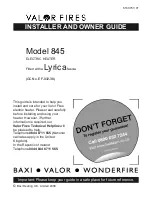
Depending on the detected deployment situation,
the components of the restraint system can be
activated or deployed independently of each
other:
R
Emergency Tensioning Device: frontal impact,
rear impact, side impact, rollover
R
Driver's air bag, front passenger air bag: fron-
tal impact
R
Knee bag: frontal impact
R
Side impact air bag: side impact
R
Window curtain air bag: side impact, rollover,
frontal impact
R
PRE-SAFE
®
Impulse Side: side impact
The installation location of an air bag is identified
by the AIRBAG symbol (
/
page 61).
Observe the information on the function of the
restraint system (
/
page 56).
Information on how the restraint system works
How the restraint system functions depends on
the severity of the impact detected and the appa-
rent type of accident.
For more information about types of accidents,
see "Overview of deployment situations"
(
/
page 55).
The activation thresholds for the components of
the restraint system are determined based on the
evaluation of the sensor values measured at vari-
ous points in the vehicle. This process is pre-emp-
tive in nature. The triggering/deployment of the
components of the restraint system must take
place in good time at the start of the collision.
Factors that can be seen and measured only after
a collision has occurred cannot play a decisive
role in air bag deployment. Nor do they provide an
indication of air bag deployment.
The vehicle may be deformed significantly without
an air bag being deployed. This is the case if only
parts that are relatively easily deformed are affec-
ted and the rate of vehicle deceleration is not
high. Conversely, an air bag may be deployed
even though the vehicle suffers only minor defor-
mation. If very rigid vehicle parts such as longitu-
dinal members are hit, this may result in suffi-
ciently high levels of vehicle deceleration.
Depending on the apparent type of accident and
the detected deployment situation, Emergency
Tensioning Devices and/or air bags supplement
the protection offered by a correctly worn seat
belt.
When activated, an air bag can provide additional
protection for the respective vehicle occupant.
Potential protection provided by each air bag:
R
Knee bag: thigh, knee and lower leg
R
Driver's air bag, front passenger air bag: head
and ribcage
R
Window curtain air bag: head
R
Side impact air bag: ribcage, also pelvis for
front seat occupants
However, no system available today can com-
pletely eliminate injuries and fatalities in every
accident situation. In particular, the seat belt and
air bag generally do not protect against objects
penetrating the vehicle from the outside. It is also
not possible to completely rule out the risk of
injury caused by the air bag deploying.
Mercedes-Benz recommends that you have the
vehicle towed to a qualified specialist workshop
56
Occupant safety
Summary of Contents for EQS 2023
Page 8: ...Left hand drive vehicles with central display 6 At a glance Cockpit central display...
Page 10: ...Left hand drive vehicles with MBUX Hyperscreen 8 At a glance Cockpit MBUX Hyperscreen...
Page 12: ...Standard driver s display 10 At a glance Indicator and warning lamps standard...
Page 15: ......
Page 19: ......
Page 20: ...18 At a glance Overhead control panel...
Page 22: ...20 At a glance Door operating unit and seat adjustment...
Page 24: ...22 At a glance Control settings in the rear passenger compartment...
















































